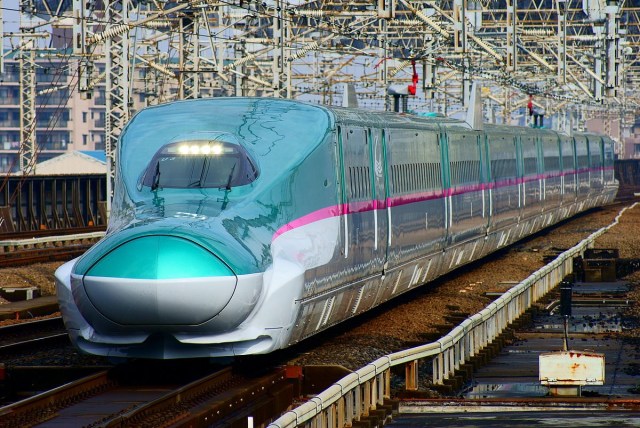
Good news if you want to get there even faster than a speeding bullet train can right now.
Japan’s Shinkansen are all fast, which is how they earned their English-language nickname “bullet trains.” But with no numerical limit on speed, there’s always the possibility of getting from point A to point B even more quickly, and that’s what East Japan Railways (a.k.a. JR East) wants to do with a newly announced upgrade to its Tohoku Shinkansen route, which runs from Tokyo to Aomori Prefecture, the northeastern tip of Japan’s main island of Hokkaido.
Shinkansen travel at different speeds depending on which section of the track they’re passing through, and JR East wants to boost that speed by 23 percent, raising it to 320 kilometers (198.8 miles) per hour from 260, for the section between Morioka Station, in Iwate Prefecture, and Shin Aomori Station, in Aomori Prefecture. This would cut the travel time between the two stations by 10 percent, shortening it to 43 minutes.
The change will extend the Tohoku Shinkansen’s 320-kilometer-per-hour section, which currently consists of only the area between Tochigi Prefecture’s Utsunomiya Station and Morioka, by an additional 178.4 kilometers, encompassing the entire line north of Utsunomiya.
▼ A map showing the planned new 320-kilometer-per-hour area, and also a shift from 110 kilometers per hour to 130 which is being implemented this month on the Shinkansen between Tokyo’s Ueno and Saitama Prefecture’s Omiya stations.
However, raising the Shinkansen’s speed isn’t as simple as just telling the conductor to open up the throttle. Along with safety upgrades to the track, JR East also has to beef up its sound-absorption infrastructure, since a 320-kilometer-an-hour train can make a lot of noise as it whistles by. Starting this month, the company will be installing additional sound-absorbing materials, raising the height of sound-blocking walls, and extending the buffering canopies on tunnels between Morioka and Shin-Aomori.
The entire project is expected to be finished in 2027.
Source: JR East via IT Media
Top image: Wikipedia/Nanashinodensyaku
Insert images: JR East
● Want to hear about SoraNews24’s latest articles as soon as they’re published? Follow us on Facebook and Twitter!